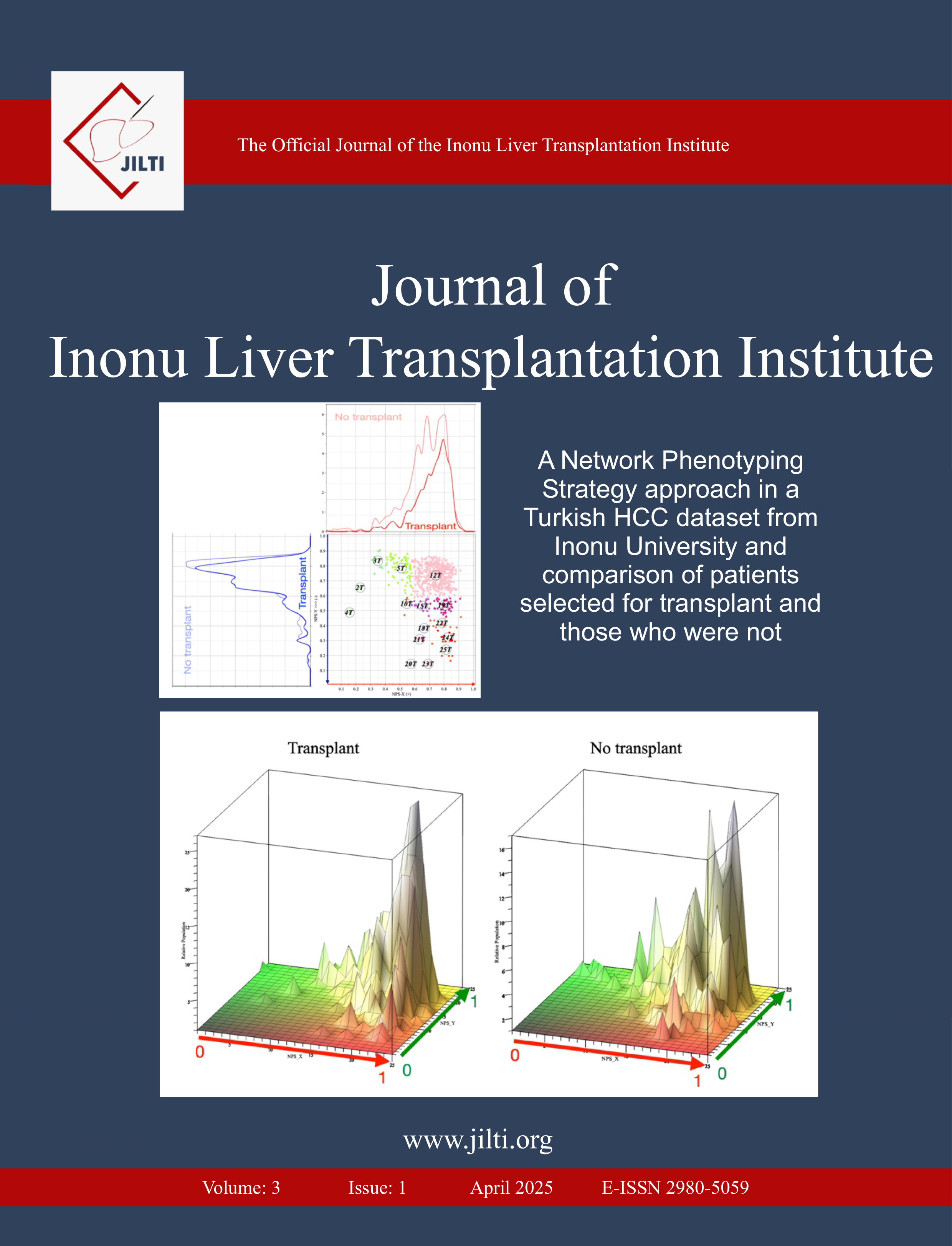Resection in Patients with Combined Hepatocellular-Cholangiocarcinoma
Sertaç Usta1, Serdar Karakas1, Sezai Yilmaz1, Volkan Ince1, Aysegul Sagir Kahraman2, Ayse Nur Akatli3, Burak Isik1, Sami Akbulut1, Tevfik Tolga Sahin1, Brian I Carr41Department of Surgery and Liver Transplant Institute, Inonu University Faculty of Medicine, Malatya, Türkiye2Department of Radiology, Inonu University Faculty of Medicine, Malatya, Türkiye
3Department of Pathology, Inonu University Faculty of Medicine, Malatya, Türkiye
4Department of Liver Cancer Biology, Liver Transplant Institute, Inonu University, Malatya, Türkiye
Objectives: Combined hepatocellular-cholangiocarcinoma (cHCC-CC) is a rare tumor that accounts for 2-3% of primary liver cancers. cHCC-CC mostly have a poor prognosis. There are publications reporting highly contradictory results regarding long-term survival after resection. The aim of this study is to examine the post-resection results of patients with cHCC-CC.
Methods: The data of 7 patients with histopathologically proven cHCC-CC collected prospectively at Inonu University Liver Transplantation Institute, between 2013-2023, were retrospectively analyzed. The preoperative variables examined were age, gender, underlying liver disease, alpha-fetoprotein (AFP) and carbonhydrate antigen (CA 19-9) levels. No patient was diagnosed with cHCC-CC in the preoperative tru-cut biopsies.
Results: Patients were predominantly male (M/F: 6/1) and median age 57 years. All patients had chronic hepatitis or cirrhosis. AFP levels were above 10 ng/dL in 5 cases (7-813 ng/dL) and CA 19-9 levels were normal in all cases. Perihilar lymph nodes resected during hepatectomy were involved with tumor in three patients. The maximum tumor diameter was 11 cm and the mean tumor diameter was 4.5 cm. Bisegmental resection was performed in four patients with cHCC-CC. Major hepatectomy was performed in two cases. Histopathologically, surgical margins were not tumor-free in two patients. The seventh case first underwent segment II-III resection for hepatocellular carcinoma (HCC), but left hemihepatectomy was performed 1.5 months later due to the presence of histopathological tumor in the surgical margins. Histopathological diagnosis confirmed HCC. After 27 months, the patient underwent salvage transplantation due to tumor recurrence within Milan criteria. Histopathological diagnosis was cHCC-CC. The patient who underwent right hemihepatectomy died on the 3rd postoperative day due to reasons other than hepatic failure (cardiac instability). One-year survival of the remaining 6 cases was 71.4%, 3-year survival was 14.3%, and 5-year survival was 14.3%.
Conclusion: cHCC-CC is an aggressive primary liver tumor associated with poor long-term oncological outcomes. Surgical resection is the only curative or palliative treatment option to improve the poor prognosis. In this study, we discussed the diagnosis, treatment and survival of 7 patients with advanced stage cHCC-CC. Studies that require a multidisciplinary approach for the treatment of these tumors are necessary to improve the survival of the patients.
Manuscript Language: English


